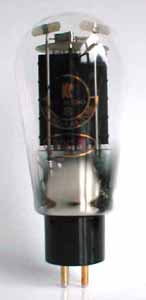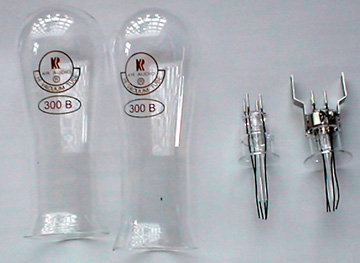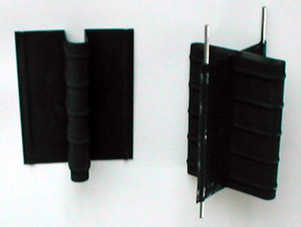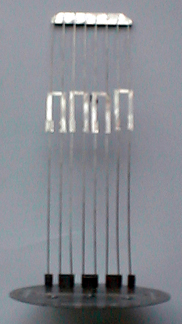|
The KR Audio 300B Balloon Tube Tip #53: by Dick Olsher
Intro KR Audio has finally crafted (thank you, Eunice Kron) a superbly-built 300B type tube whose parameters are similar to those of the Western Electric (WE) 300B. Officially introduced in March of this year, KR Audio’s 300B Balloon tube is intended as a direct substitution for the original WE 300B or any other 300B used in a classic single-ended triode (SET) or push-pull amplifier - without the need for re-biasing. Just pop in a new set of tubes and you are good to go. Plate voltage and dissipation ratings exceed those of the original design, so it should be perfectly safe to substitute KR Audio’s Balloon tube in any 300B based amplifier known to me. The Technology The tube is sold in matched pairs. As you remove the tubes from their box, let your eyes caress the beautiful balloon envelope. Internally and externally this tube is a joy to behold – it just oozes quality. No wonder it is warranted for a period of 2 years.
In the case of the anode and grid, however, the KR Audio construction is similar to that of the original WE. Take a closer look at the anode assembly. As with the original WE, side-ribs are used to stiffen the anode’s metal stampings, and the wide flange you see at the junction of the two anode plate halves is used to increase the assembly’s rigidity.
The Playing Field Since production of the WE brand ceased in the late 80s due to sagging demand, and being of no interest to the musical instrument industry, it has in recent years become a boutique tube commanding extreme prices. Westrex has indicated that new production of the WE-300B is still ongoing in their new facility in Huntsville, AL. At the other end of the price spectrum, the Chinese Shuguang factory had flooded the market during the 90s with cheap imitations, which frankly has damaged the reputation of the 300B type and caused market prices of vintage WE 300B to reach for the stratosphere. To their credit, they have made amends in recent years with the introduction of the 300B-98 series, including the fine 300B-98C titanium mesh-plate version, which is being re-branded by Valve Art. However, the real Chinese star is the TJ Mesh Plate Gold pin, a premium tube I have been enjoying for several years. Thus, it seemed fit to pit the KR Audio against the Westrex 300B and the TJ Mesh plate – a duo comprising my current sonic favorites. Let the games begin! The Sound Thirty years of observation cannot be wrong. Time has served to crystallize for me the truth that subjective audio reviewing is driven by one’s priorities in reproduced music. It is also true that priorities may evolve over a lifetime of listening. As a young man my priorities were very much audiophile like, in search of detail, focus, and purity of tone. It was J. Gordon Holt, one of my mentors back then, and a fan of classical romantic music, who turned me on to the importance of tonal balance. What Gordon was after was a concert-hall impression – a soundstage within which the orchestral foundation was reproduced with power and proper weight. He had an aversion to mini-monitor sound, preferring timbre fidelity even at the expense of imaging and sonic purity. He thought that I had “gone off the deep end” when I had given the original ProAc Tablette a glowing review in the pages of Stereophile Magazine. After all, how could I endorse a speaker that produced a “toy violin” sound? Gordon’s tonal center of gravity certainly rubbed off on me. In time I began to ‘supersize’ my loudspeakers and rail against the ‘lean and bright’ school of design that many audiophiles mistake for high-fidelity sound. I’ve even been accused of being anti-treble, of preferring a rolled-off high-end. Well, yes, I am definitely allergic to treble when the tonal balance is bass deficient. It is well known that lack of bass requires a complementary restriction of treble bandwidth to obtain the most natural overall balance. Otherwise, listening fatigue is bound to set in rapidly. In hand with tonal balance/timbre fidelity, harmonic purity is also an essential priority of mine. Harsh, edgy or gritty textures are a major turn off. This has to do with the granularity of the musical tapestry, ranging in subjective terms from velvety and luxurious all the way to “audio hell,” that is sandpapery and gritty. Harmonic distortion products impact textural quality; while even-order products tend to fatten up the sound, odd-order products typically sound harsh. Of course, as is the case with fine wine, there is no simple analytical test that can establish the perceived “flavor” of a particular piece of audio gear. The proof is in the listening. The late and great Harry Olson, for many years the dean of American acoustical engineering, expressed it thusly: the ear is the final arbiter in all things audio. It was a reaction to the specification-driven solid-state electronics of the early 60s, which just did not sound as well as the higher-distortion tube gear of that period, that spawned the underground audiophile/Stereophile movement. Having laid the foundation for my subjective rating of the 300B contestants, it should come as no surprise to anyone that what appeals to me the most about the KR Audio tube is its Goldilocks sense of tonal balance: not too fat or forward sounding– just right! No particular aspect of the spectrum is emphasized. In contrast, the new Westrex 300B sounds more lively. With a leaner balance and a brighter disposition, it should prove more problematic to integrate into an existing system. Obviously, in the context of fat bass and a rolled-off upper range, the Westrex may prove to be just what the doctor ordered. To be sure, the KR sounds nothing like the TJ gold pin. Speak about plush, liquid gold in a bottle, the TJ dishes out an incredibly romantic balance within an expansive and vivid soundstage. The bass range is somewhat fat. Image outlines feature wonderful spatial bloom, but relative to the KR, the TJ lacks a measure of focus and detail resolution, making it more difficult to visualize the inner recesses of the soundstage. In contrast, the KR has no significant weakness. Yes, it is a tad deficient in spatial bloom relative to the TJ, but it manages to sound harmonically sweet without giving up bass definition, detail resolution or focus. Its ability to retrieve low-level detail is superb. It should be emphasized that the KR’s resolving power is not gained at the expense of brightening textures or exaggerating treble detail. That would be the antithesis of concert hall sound. In my experience, audiophile systems tend to sound much brighter than the real thing. And I have yet to experience that sort of balance in a concert hall. Rather, the KR climbs to the top of mount Olympus by unfolding transients with iron-fisted control. Images outlines are palpably fleshed out with holographic precision. The KR presents an exceedingly clean window onto the soundstage - without the veiling that handicaps so many modern 300B clones. Its impression of a layered soundstage, fully lit, so that no spatial recesses are obscured by shadows, exceeds that of the competition. Conclusion Above all else, the KR Audio 300B’s sound is exceptionally natural and organic, without any false sonic editorializing. And that counts for a whole lot in my book. On a scale of 100, the final scores are as follows: KR Audio: 97 TJ Mesh Plate Gold Pin: 95 Westrex new 300B: 90 It has been said that tube quality ultimately rests upon the manual skill and experience of the production staff. KR Audio is a case in point. Its sound quality flows from a perfect union of materials excellence and superb craftsmanship. Long live the new King! Specifications Filament specifications: DC/AC Voltage 5 V DC/AC Current 1.2 A Amplification Factor: 3.9 Power Amplifier class A1: Maximum ratings: DC Plate Voltage 550 V Dissipation 50 W DC Plate Current 120 mA Price: $460/matched pair Company Information Web site: http://www.kraudioproducts.com/index.htm
|

 The late Dr. Riccardo Kron, KR Audio’s progenitor, was an ardent proponent of the use of Simax brand glass (manufactured in the Czech Republic) for tube envelopes. This is a hard borosilicate glass (similar in composition to Pyrex) that is used in applications which place the highest demands on heat-resistance and che
The late Dr. Riccardo Kron, KR Audio’s progenitor, was an ardent proponent of the use of Simax brand glass (manufactured in the Czech Republic) for tube envelopes. This is a hard borosilicate glass (similar in composition to Pyrex) that is used in applications which place the highest demands on heat-resistance and che mical stability. It is corrosion-resistant even at temperatures up to 300°C, and is the glass type of choice for glass-blowing of scientific apparatus. Its use in tube manufacturing ensures the maintenance of a high vacuum and long-term stability. Mr. Gencev, KR Audio’s product engineer, points out that while standard commercial soft glass is cheaper and eminently suitable to mass production because of its low softening point, it cannot be reliably employed for hand production. The original WE 300B used soda-lime soft glass for the envelope and a lead type glass in the tube stem due to its higher electrical resistivity.
mical stability. It is corrosion-resistant even at temperatures up to 300°C, and is the glass type of choice for glass-blowing of scientific apparatus. Its use in tube manufacturing ensures the maintenance of a high vacuum and long-term stability. Mr. Gencev, KR Audio’s product engineer, points out that while standard commercial soft glass is cheaper and eminently suitable to mass production because of its low softening point, it cannot be reliably employed for hand production. The original WE 300B used soda-lime soft glass for the envelope and a lead type glass in the tube stem due to its higher electrical resistivity.


